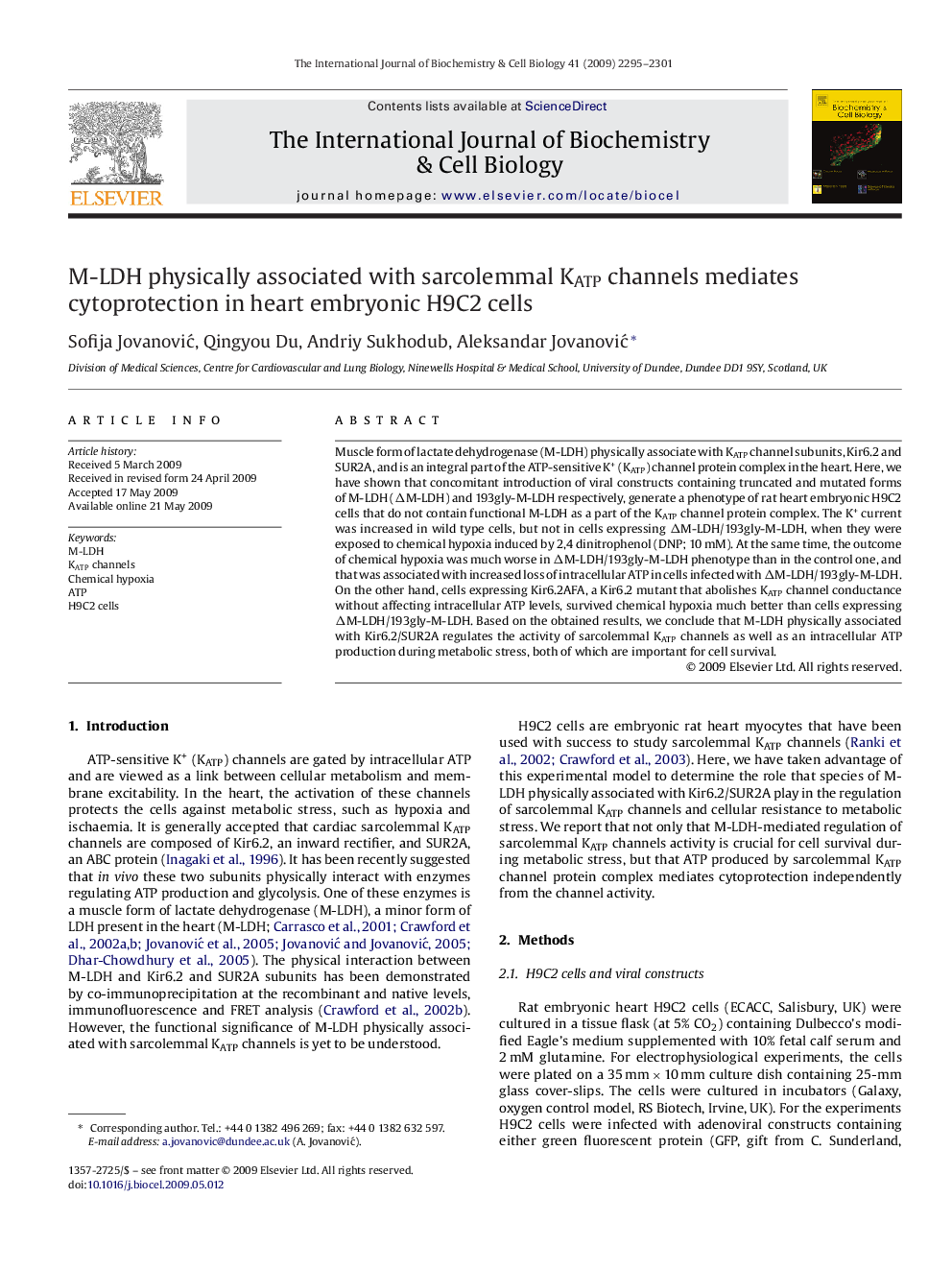| Article ID | Journal | Published Year | Pages | File Type |
|---|---|---|---|---|
| 8325739 | The International Journal of Biochemistry & Cell Biology | 2009 | 7 Pages |
Abstract
Muscle form of lactate dehydrogenase (M-LDH) physically associate with KATP channel subunits, Kir6.2 and SUR2A, and is an integral part of the ATP-sensitive K+ (KATP) channel protein complex in the heart. Here, we have shown that concomitant introduction of viral constructs containing truncated and mutated forms of M-LDH (ÎM-LDH) and 193gly-M-LDH respectively, generate a phenotype of rat heart embryonic H9C2 cells that do not contain functional M-LDH as a part of the KATP channel protein complex. The K+ current was increased in wild type cells, but not in cells expressing ÎM-LDH/193gly-M-LDH, when they were exposed to chemical hypoxia induced by 2,4 dinitrophenol (DNP; 10Â mM). At the same time, the outcome of chemical hypoxia was much worse in ÎM-LDH/193gly-M-LDH phenotype than in the control one, and that was associated with increased loss of intracellular ATP in cells infected with ÎM-LDH/193gly-M-LDH. On the other hand, cells expressing Kir6.2AFA, a Kir6.2 mutant that abolishes KATP channel conductance without affecting intracellular ATP levels, survived chemical hypoxia much better than cells expressing ÎM-LDH/193gly-M-LDH. Based on the obtained results, we conclude that M-LDH physically associated with Kir6.2/SUR2A regulates the activity of sarcolemmal KATP channels as well as an intracellular ATP production during metabolic stress, both of which are important for cell survival.
Related Topics
Life Sciences
Biochemistry, Genetics and Molecular Biology
Biochemistry
Authors
Sofija JovanoviÄ, Qingyou Du, Andriy Sukhodub, Aleksandar JovanoviÄ,
